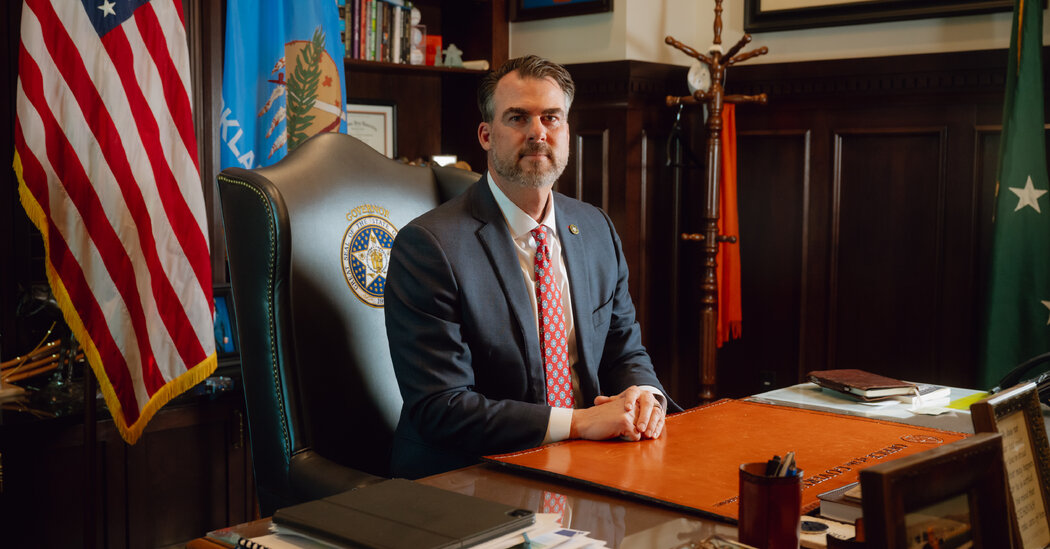Oklahoma’s Political Dynamics: A Clash Over Immigration Policies
In a striking turn of events, Oklahoma’s conservative Republican governor, Kevin Stitt, and the state’s Republican schools superintendent, Ryan Walters, who have previously aligned themselves closely during the Trump era, are now at odds over a contentious immigration proposal. Governor Stitt, known for his hardline stance on various issues, has shown unwavering support for conservative policies, including deploying Oklahoma guardsmen to the southern border and introducing Trump-branded Bibles in schools. However, the tension escalated when Superintendent Walters suggested implementing measures to identify undocumented students in Oklahoma’s educational institutions.
Governor Stitt, in a recent interview conducted in his State Capitol office, expressed his disapproval, stating, “When I saw them picking on kids, I thought that’s a step too far.” This sentiment highlights a potential boundary in the current wave of aggressive political strategies, even among staunch conservatives. The conflict in Oklahoma may serve as a bellwether for the limits of acceptable rhetoric and action within the broader national discourse on immigration.
The disagreement took shape when Walters proposed new regulations that would mandate Oklahoma public schools to gather citizenship information from their students. This controversial initiative, which has been approved by the state school board in January, is now under consideration by the Oklahoma Legislature. Walters, however, has not held back in expressing his frustrations with the governor’s stance, asserting, “It’s incredibly unfortunate that the governor has decided to undermine President Trump’s immigration agenda and take these types of swipes at him. He’s attacking President Trump.”
This clash between two prominent figures in Oklahoma’s Republican leadership raises critical questions about the future of immigration policy in the state and reflects the complex dynamics within the party as it navigates shifting public sentiments and political priorities.




